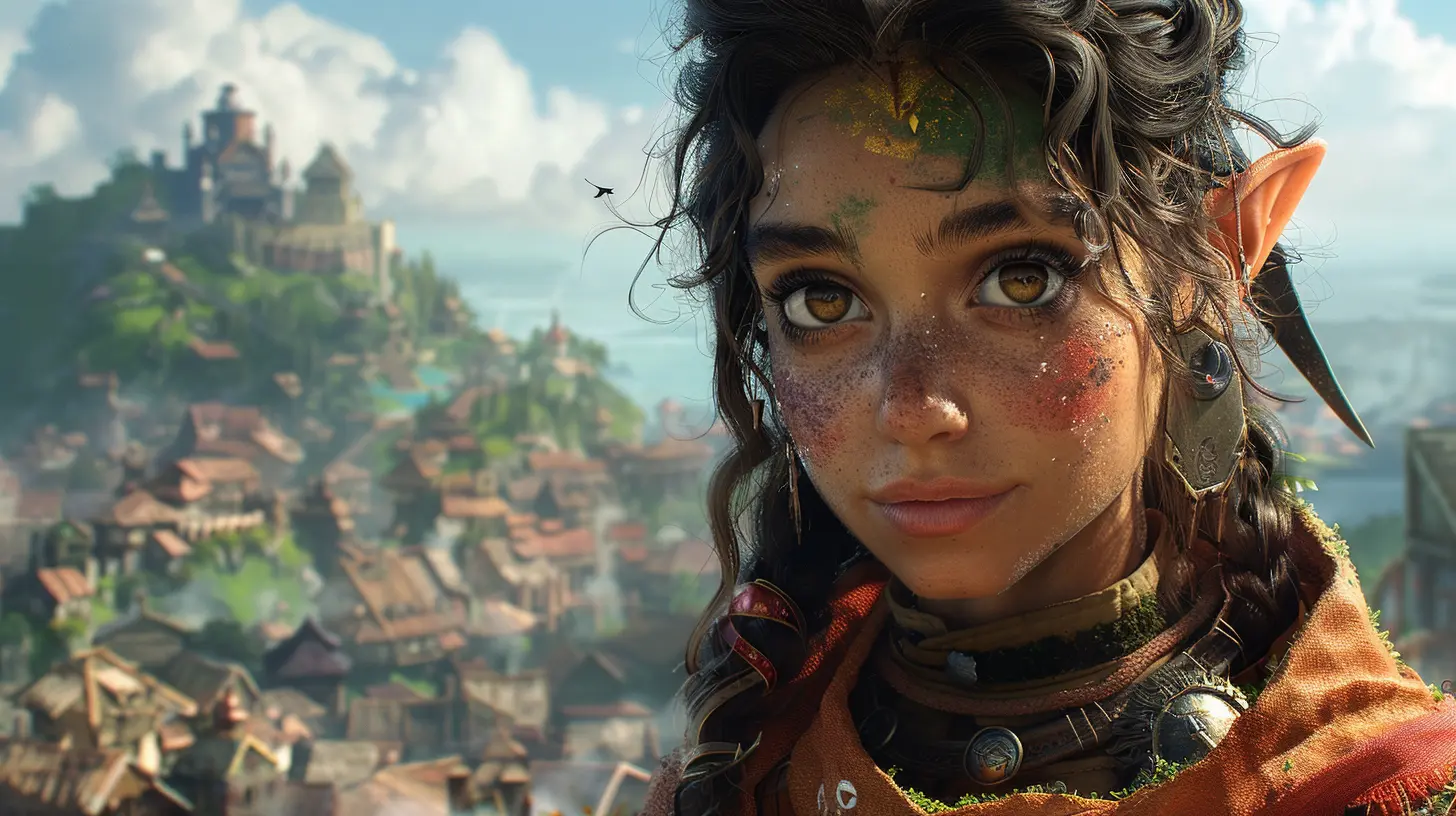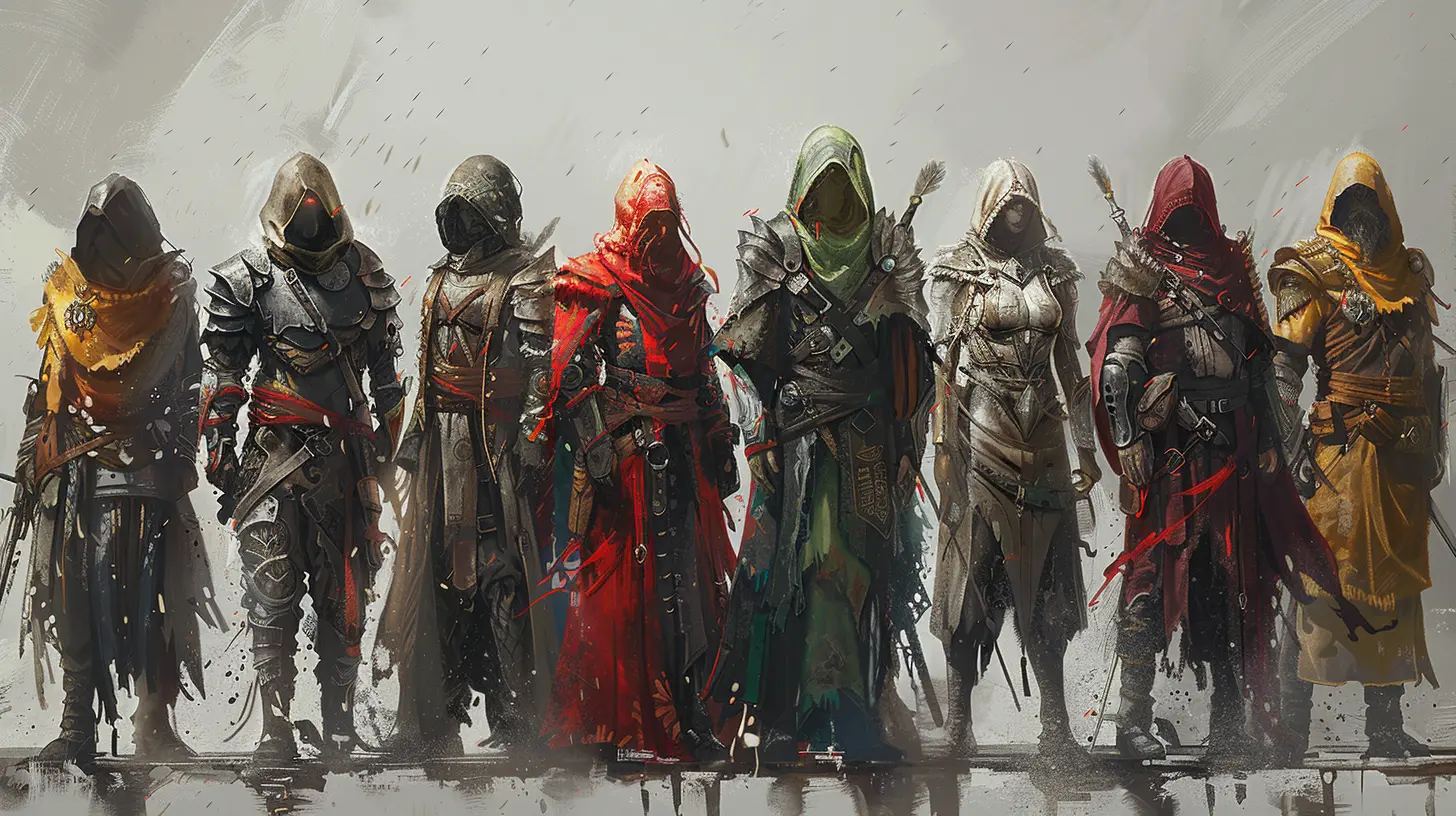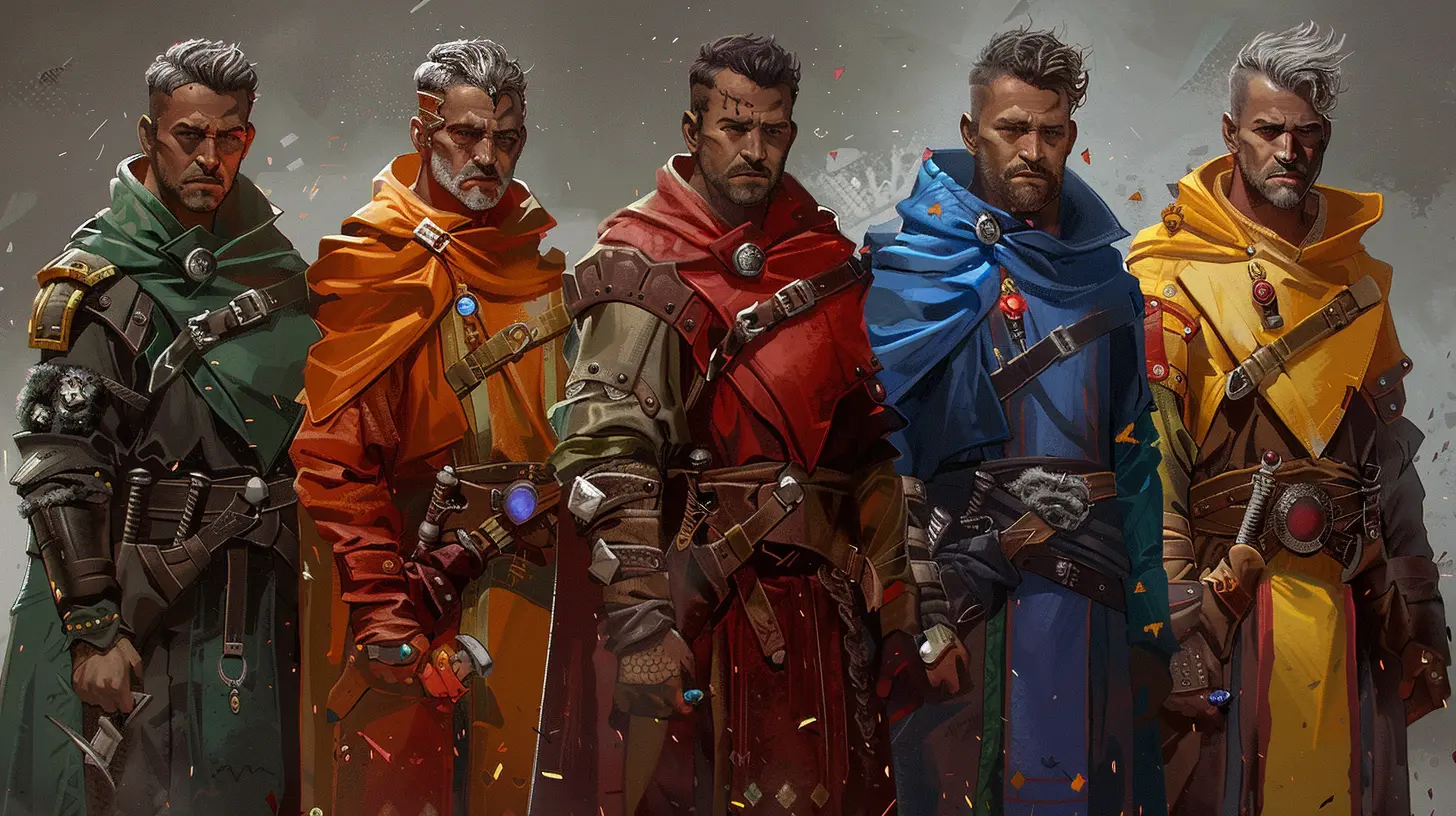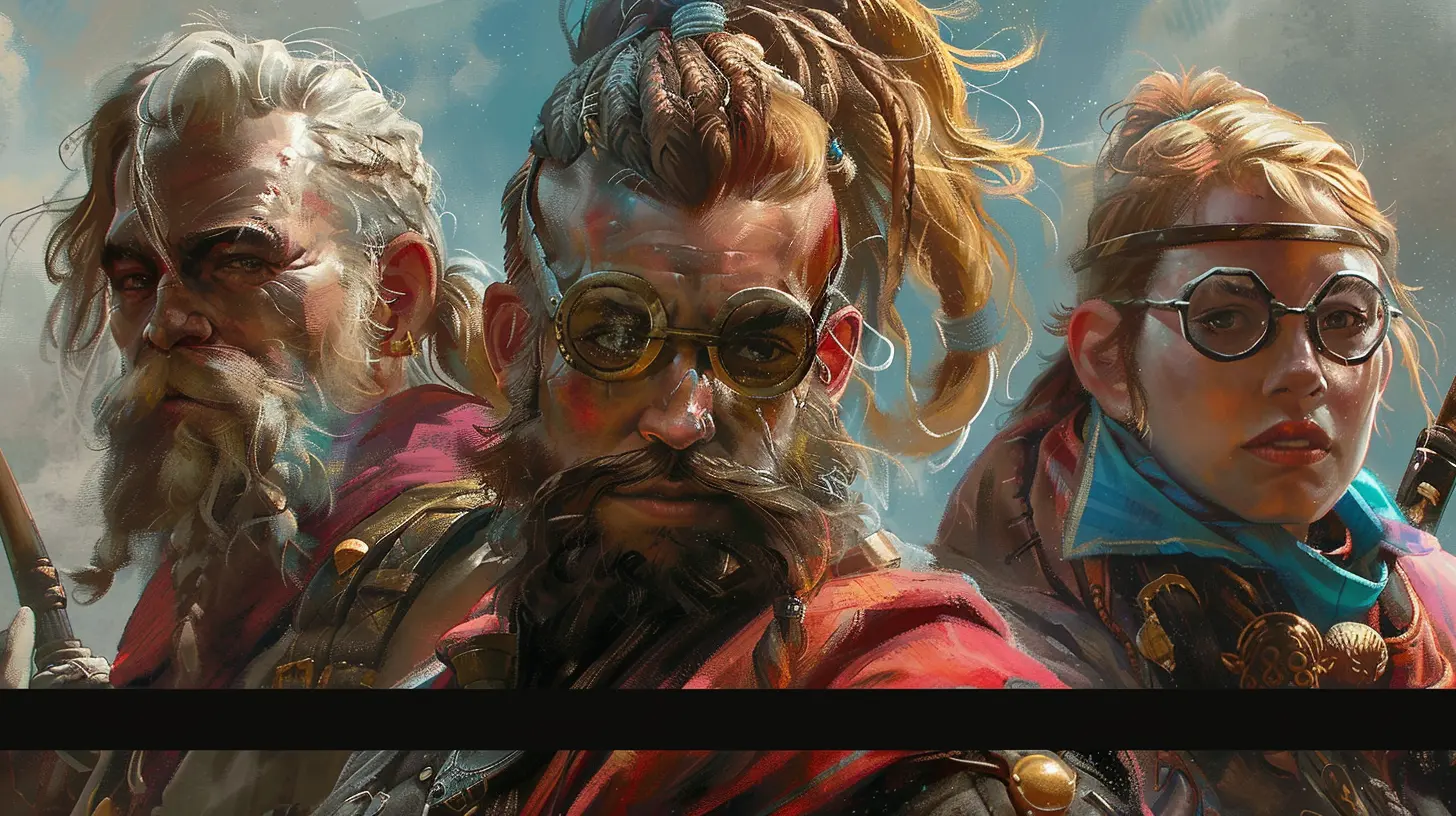13 April 2025
When it comes to video games, you know what really gets us hooked? It’s not just the epic boss battles or the snazzy graphics—though, hey, we all love a little eye candy. It’s the feeling of being in the world. The deep lore, the lush landscapes, and, oh yeah, the ability to dress our characters in the most ridiculous outfits possible while still pretending we’re saving the world. Ever stopped to think about how your orc warrior’s neon-pink mohawk somehow fits into the grand tapestry of a game’s lore? Yeah, me neither—until now.
Let’s dive into the wacky, wonderful intersection of world-building and character customization and how these two gaming pillars come together to create, well, magic. Grab your potions and gear up; we’re going in. 
Lore: The Glue That Holds the Fantasy Together
Let’s get one thing straight: lore isn’t just some fancy fluff that your favorite RPG throws around to sound intellectual. Lore is the backbone of every richly imagined game world. It’s the unofficial Wikipedia of a universe, explaining why the sky is green, why the goblins hate your guts, and why there’s a talking tree demanding you fetch acorns. Lore gives context, depth, and a little something we like to call soul.But let’s face it, no one starts a game saying, “Oh boy, I can’t wait to dig into 800 years of elf history!” You’re here to smash stuff or maybe explore. Yet, over time, the bits and bobs of lore start seeping into your gamer brain. That cool sword you found? Turns out it once belonged to some legendary hero who singlehandedly saved the realm. The haunted mansion? Yeah, it’s haunted because some mage had an epic meltdown.
Lore turns a game world into a living, breathing entity. Without it, we’d all just be running around aimlessly in blank digital landscapes. It’s like icing on a cake—you don’t always think about it, but you sure miss it when it’s not there. 
Customization: Where Chaos Meets Creativity
Okay, so we’ve established lore is the nerdy librarian of the gaming world. Enter customization—the rebellious teenager who dyes their hair blue and refuses to wear matching socks. Customization is where YOU, the player, take a slice of that meticulously crafted lore pie and slather it with your chaotic energy.Want your knight to wear a clown mask during a solemn royal meeting? Go for it. Prefer your mage to cast spells in a banana suit? Why not? Customization hands over the keys to the car and says, “Drive wherever you want, just don’t wreck the lore too much, okay?”
And here’s the thing: customization isn’t just about aesthetics. Sure, giving your character a snazzy leather jacket is fun, but it’s also a way to connect with the game world. By choosing how your character looks, acts, or fights, you’re essentially saying, “This is MY story now.” You’re not just playing a game; you’re co-authoring it. 
When Lore and Customization Collide
Ah, now we’re getting to the juicy part. What happens when the carefully curated lore of a game meets the wild west of player customization? Sparks fly, my friend. Sparks. Fly.Think about games like The Elder Scrolls V: Skyrim. The lore tells you that the Nords are tough-as-nails warriors who’d rather punch a dragon than drink tea. But what do you do? You create a Nord who spends more time crafting fancy cheese wheels than fighting. And somehow, it works! Skyrim’s world is built so robustly that even your cheese-obsessed warrior makes sense.
And then there’s The Sims. Does it have the same kind of deep lore as, say, Mass Effect? Not really. But its minimal backstory leaves plenty of room for customization hijinks. You can turn a suburban family into a house full of vampires who never wash the dishes. Somehow, the game accommodates your chaos.
The best games strike a balance between respecting their lore and letting players go wild with customization. They create worlds where even your most absurd choices feel like they belong. It’s like baking cookies: the developers lay down the dough, but you get to sprinkle the chocolate chips—or, you know, gummi bears. 
The Role of Role-Playing
Let’s not forget the role of, well, role-playing. Customization and lore aren’t just there for giggles (though they sure do deliver on that front). They enhance role-playing—the essence of becoming someone else in a game world.When you design your rogue to look like a shady, trenchcoat-wearing pickpocket, you’re more likely to act shady. When you know your character’s village was burnt down by some evil overlord, you’ve got a reason to go full John Wick on his army. The lore gives your character purpose, and customization gives them personality. It’s the peanut butter and jelly of gaming.
And can we just take a moment to appreciate how awesome it is to see this play out in multiplayer games? Your pal spent hours crafting a lore-abiding elf ranger with a tragic backstory, while you show up as a barbarian wearing hotpants and wielding a weapon called “Bonk Stick 3000.” Yet, somehow, the game world makes you both feel at home.
When It Goes a Bit Too Far...
Of course, not all collisions between lore and customization are smooth sailing. Sometimes, you end up with a game world where everyone’s a neon-colored, winged werewolf-dragon hybrid, and suddenly the epic narrative about saving the kingdom feels more like a fever dream.For instance, in MMORPGs like World of Warcraft, you’ll occasionally stumble upon players who’ve turned their characters into walking memes. Does it mildly clash with the serious lore about ancient battles and shadowy gods? Sure. But it’s also hilarious, and honestly, who’s complaining?
Developers walk a fine line here. Give players too much freedom, and your meticulously crafted lore might crumble under the weight of clown-themed wizards. Restrict customization too much, and you risk alienating players. It’s a delicate dance, but when done right, it’s a masterpiece.
Why We Love the Chaos
So why is the intersection of lore and customization such a big deal? Why do we, as gamers, eat this stuff up like it’s the last slice of pizza?It’s because this combo gives us the best of both worlds. We get to step into a fully realized universe and make it our own. We’re not just visitors; we’re contributors. Your character isn’t just some pre-scripted avatar; they’re your weird little brainchild. That level of immersion is what keeps us coming back, whether it’s to build a perfectly lore-compliant knight or a total abomination that looks like they were assembled from spare parts in someone’s garage.
And let’s be real—half the joy of gaming is sharing your bizarre creations. Who hasn’t proudly shown off their pirate-themed farm in Stardew Valley or their beefy pink ninja in Fortnite? Your character isn’t just a reflection of the game’s world; they’re a reflection of you.
Final Thoughts: The Sweet Spot
The intersection of lore and customization is where the magic of gaming happens. It’s where seriousness meets silliness, where deep narratives mingle with neon hairdos, and where players truly feel at home in a world built for them. It’s like a Choose-Your-Own-Adventure book that also lets you draw doodles in the margins.At the end of the day, whether you’re role-playing as a grimdark knight seeking vengeance or a googly-eyed wizard with a penchant for bad jokes, games are at their best when they let you tell your story within their story. And honestly? That’s what makes gaming one of the coolest forms of storytelling out there.





Garrett White
Rich lore enhances character depth and player engagement.
April 14, 2025 at 2:54 PM